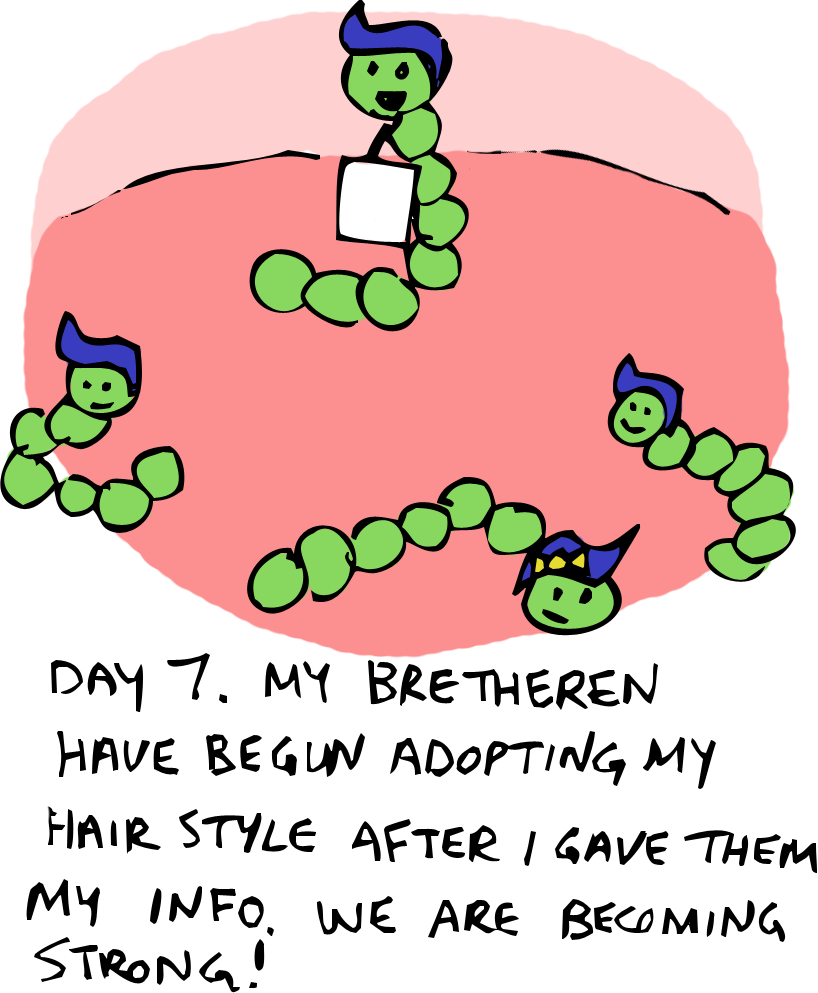The great thing about running a science website is that keeping up with
your “competition” takes on the same feeling as visiting with friends. One of
our personal best friends in this regard is the popular science juggernaut called RadioLab. The brilliant folks that create their articles and podcasts produce
a constant stream of topics that get me thinking. Their podcast “What’s Left When You’re Right?” got me thinking enough to write this article. I highly recommend giving it a listen.
Humans have all kinds of strange quirks. We love food that is terrible
for us. We jeopardize secure lives and careers to chase crazy dreams. But few
of our quirks are as tangible and as complex as our tendency to be
right-handed. As most elementary school kids know, a whopping 90% of us Have brains that pull to the right in the vein of a poorly aligned sports car. The result for
the remaining 10% (which includes our tireless illustrator over here at Sketchy
Science) is that the world is not always an easy place. Among the things that
left-handers face unfair challenges with are bank machines (all the slots are
on the right), typing numbers (number keys are on the right of your keyboard),
driving a manual transmission car, using scissors, and writing in
binders/notebooks.
On top all the practical disadvantages, researchers at Yale University
have found some evidence suggesting that south paws are at a higher risk of suffering from bi polar personality disorder, schizophrenia, and depression. But in a world with no numpad, who could blame them?
Given that the world seems out to get them, why do left handed people
still exist? Darwin has made it perfectly clear that nature should phase out
any trait that leaves an individual at a disadvantage. Well, as it turns out,
there may be one thing working in their favour: lefties will kick your butt at
most athletic/physical competitions. If you’ve ever watched a baseball game or
a boxing match you may have heard the commentators mention that the pitcher,
batter, or one of the fighters is left-handed. This is not an idle observation. Research has shown that a significantly greater number of pro athletes are
left-handed than you would expect given that they make up only 10% of the
general population (Grouios et al., 2000).
It makes sense when you think about it. Staying with the boxing example,
most fighters you face when you start out (like most people overall) are
right-handed. Your training will therefore bias you towards attacking and
defending against people with a right-handed bias. When you one day face off against
a left-hander, however, everything you knew about boxing is suddenly completely
backwards. You may be faster, stronger, and even more intelligent, but if you're suddenly fighting a mirror image of what you expect, you will look as awkward
as a newborn horse trying to stand for the first time.
Athletic superiority also leads to reproductive success. A study
published in Evolution & Human Behaviour found that athletes reported
having significantly more sexual partners than non-athletes (Faurie, Pontier,
& Raymond, 2003). The authors point out that athletes are generally more
physically fit and attractive than non-athletes and that this might have
something to do with it. Fortunately, we can all agree that science writers are
even more attractive than athletes, on average.
Many people don’t buy the whole left-handed athlete explanation for why
south-paws persist despite the drawbacks. The scientists who disagree offer
another possible explanation. They believe that as humans evolved the ability
to speak, we became more right-handed. For whatever reason, when language
evolved in people, it took over a good chunk of the left half of the brain.
Since language and speech require such fine control over tiny muscles in your
mouth and throat, as the
left side of our brains got better at speaking it also got better at controlling motor skills. And since the left side of your brain controls the right side of your body,
the side effect is that most of us are now right-handed.
This would explain why evidence for right-handed dominance can be found
all through human history, from the time of Greek philosophers through the middle ages. It can also help shed some light on when language first evolved. Evidence
of right-handed preference has been found in stone tool use dating back nearly
2 million years! (Toth, 1985) This could mean that humans were first learning
to speak (and becoming right-handed) before we were even technically humans (2 million years ago we were
either Homo habilis or Homo erectus, depending who you ask). Homo sapiens
(modern humans) first appeared about 200,000 years ago.
That's the amazing thing about science. What starts as a seemingly
meaningless difference between people eventually gives us insight into neuroscience,
evolution, and the incredibly distant past. Think about that next time you
reach for a can opener.
References:














































